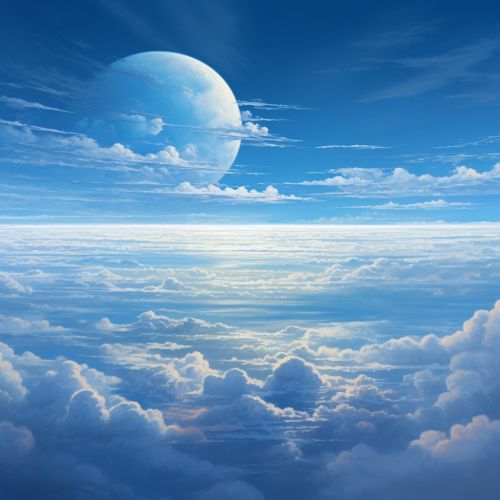The Chemistry of Stratospheric Halogen Chemistry and Ozone Depletion
Introduction
The stratosphere is a layer of Earth's atmosphere that plays a crucial role in protecting life on Earth by absorbing most of the Sun's harmful ultraviolet radiation. The ozone layer, located in the stratosphere, is primarily responsible for this protective effect. However, certain chemical reactions involving halogens can lead to the depletion of this vital ozone layer, a phenomenon known as ozone depletion. This article delves into the chemistry of stratospheric halogen chemistry and its role in ozone depletion.


Stratospheric Halogen Chemistry
Halogen chemistry in the stratosphere primarily involves the halogen elements chlorine and bromine. These elements reach the stratosphere in the form of stable compounds, such as chlorofluorocarbons (CFCs) and bromofluorocarbons (Halons). Once in the stratosphere, these compounds can be broken down by solar radiation, releasing chlorine and bromine atoms. These atoms can then participate in catalytic cycles that destroy ozone.
Chlorine and Bromine Activation
The process by which stable halogen-containing compounds are converted into reactive halogen species is known as halogen activation. This process is primarily driven by solar radiation, which can break the bonds in halogen-containing compounds, releasing reactive halogen atoms. For example, when a CFC molecule absorbs a photon of ultraviolet light, it can dissociate to form a chlorine atom and a radical species. The chlorine atom can then react with an ozone molecule, initiating a catalytic cycle that leads to ozone destruction.
Catalytic Ozone Destruction
Once activated, halogen atoms can participate in catalytic cycles that destroy ozone. In these cycles, a single halogen atom can destroy many ozone molecules before it is deactivated. For example, a chlorine atom can react with an ozone molecule to form chlorine monoxide (ClO) and molecular oxygen. The ClO can then react with another ozone molecule to regenerate the chlorine atom and produce two molecules of oxygen. This cycle can continue until the chlorine atom is deactivated, leading to significant ozone depletion.
Ozone Depletion
Ozone depletion refers to the observed decrease in the concentration of ozone in the stratosphere. This phenomenon has been linked to the increase in the atmospheric concentrations of halogen-containing compounds, such as CFCs and Halons. These compounds are primarily released by human activities, including the production of aerosol propellants, refrigerants, and foam-blowing agents.
Ozone Hole
The most dramatic manifestation of ozone depletion is the so-called "ozone hole" over Antarctica. This is a region of the stratosphere where the concentration of ozone drops to very low levels during the Antarctic spring. The formation of the ozone hole is driven by the unique meteorological conditions of the Antarctic stratosphere and the catalytic destruction of ozone by activated halogen species.
Impacts of Ozone Depletion
The depletion of the ozone layer has significant environmental and health impacts. The ozone layer absorbs most of the Sun's harmful ultraviolet-B (UV-B) radiation. Therefore, a decrease in stratospheric ozone can lead to an increase in the amount of UV-B radiation reaching the Earth's surface, which can cause skin cancer and cataracts in humans, as well as damage to terrestrial and aquatic ecosystems.
Mitigation Efforts
In response to the threat of ozone depletion, the international community has taken steps to reduce the production and consumption of halogen-containing compounds. The Montreal Protocol on Substances that Deplete the Ozone Layer, adopted in 1987, has led to a significant decrease in the atmospheric concentrations of many ozone-depleting substances. As a result, the ozone layer is expected to recover to its pre-1980 levels by the middle of the 21st century.
